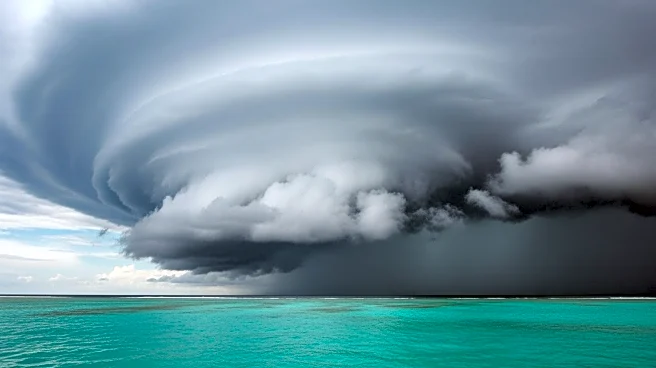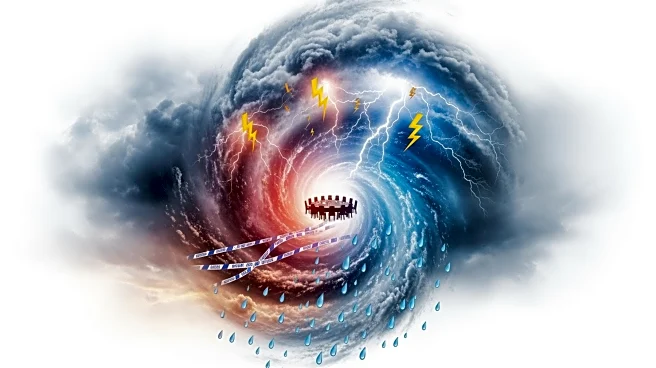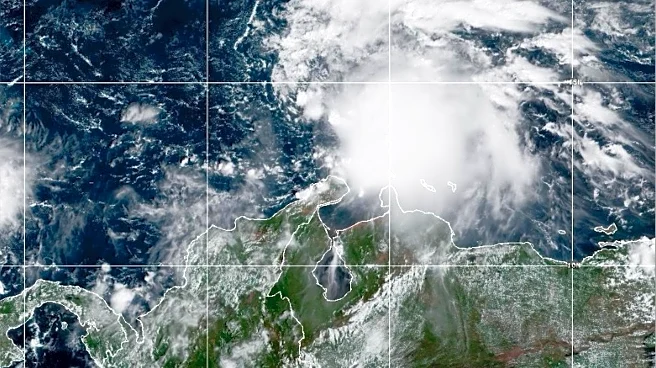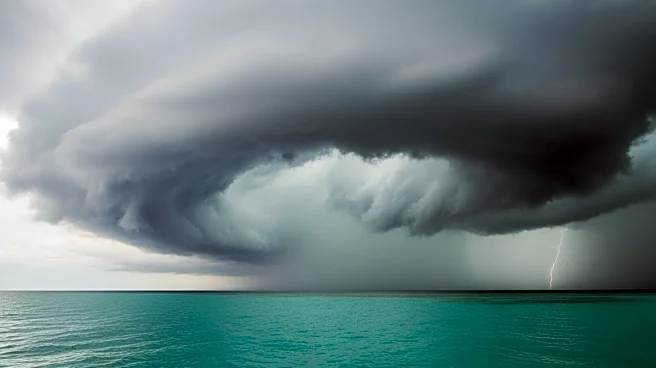What's Happening?
Tropical Storm Melissa is currently moving slowly across the central Caribbean, with sustained winds of 50 mph. The storm is expected to strengthen due to near-record warm waters, which are about 1.3 degrees
Celsius warmer than average. A Hurricane Watch is in effect for Haiti's south coast, and a Tropical Storm Watch for Jamaica. High wind shear is currently limiting Melissa's development, but the storm's heavy rains pose a threat of flooding and mudslides in vulnerable areas like Haiti, the Dominican Republic, and Jamaica. The National Hurricane Center predicts that Melissa could become a major hurricane early next week.
Why It's Important?
The Caribbean region is highly susceptible to the impacts of hurricanes, including severe flooding and infrastructure damage. The economic and humanitarian consequences can be significant, with potential disruptions to tourism, agriculture, and local economies. The warm ocean temperatures, exacerbated by climate change, increase the likelihood of rapid storm intensification, posing a greater threat to life and property. The situation highlights the need for effective disaster preparedness and response strategies in the region, as well as international support for recovery efforts.
What's Next?
Meteorologists are closely monitoring Melissa's path and potential intensification. If the storm strengthens into a hurricane, it could impact Jamaica, the Cayman Islands, and Cuba. Authorities in these areas are advised to prepare for possible evacuations and emergency measures. The National Hurricane Center will continue to provide updates on Melissa's development, guiding local governments in their response plans. The potential for rapid intensification means that stakeholders must be ready to act swiftly to mitigate damage and ensure public safety.












